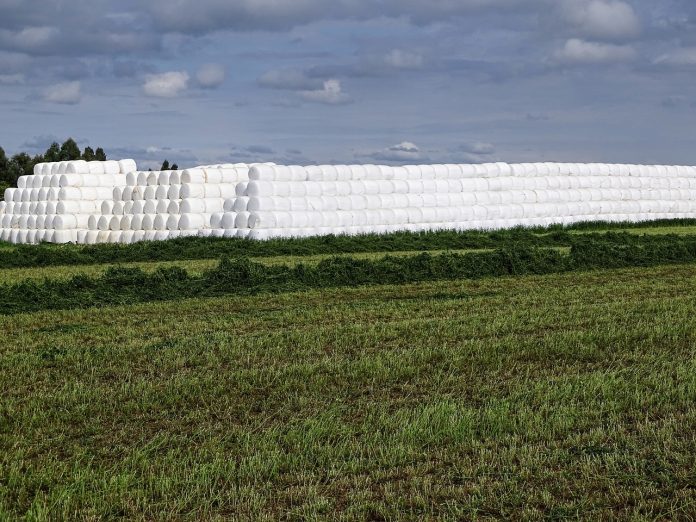Even though alfalfa has not been seeded yet, it is time to start thinking about managing weeds in seedling alfalfa in order to be ready. Greater than 95 percent of weed control in alfalfa is due to competition from a healthy stand.
Proper fertilization, use of disease-resistant varieties, insect control, cutting management and use of herbicides are necessary to provide a competitive alfalfa stand, providing significant weed control. If weeds become a problem, they can compete or interfere for light, nutrients, water and space, directly influencing yield, quality and standability.
Improved yields
Alfalfa yields may be improved at least 8 percent over the life of the stand if weeds are controlled in seedling alfalfa.
Weeds emerging with the crop are the most competitive. Maintain forage relatively weed-free for the first 60 days.
Weeds emerging beyond 60 days usually will not reduce future alfalfa yields; however, weeds emerging beyond 60 days may reduce forage quality.
Broadleaf weeds are generally more competitive against alfalfa than grassy weeds.
Hopefully, perennial, biennial and annual weeds in no-tillage alfalfa were controlled prior to seeding. Summer annual weeds will be emerging with the alfalfa and can continue emerging into June if the stand is not good.
Problematic weeds
Perennial and biennial weeds may also emerge after seeding. The most problematic weeds in spring alfalfa seedings are lambsquarters, pigweed, common and giant ragweed, smartweed, and annual grasses with lambsquarters usually the most prevalent.
Herbicides available to control broadleaf weeds postemergence in seedling alfalfa include bromoxynil, 2,4-DB, Pursuit, and Raptor. Bromoxynil controls lambquarters most effectively followed by Raptor and 2,4-DB.
Pursuit and Raptor provide the most effective pigweed control followed by bromoxynil and 2,4-DB. Bromoxynil and 2,4-DB effectively control common ragweed, followed by Raptor. Giant ragweed is best controlled with 2,4-DB, followed by bromoxynil.
Smartweeds are best controlled with bromoxynil and Pursuit followed by Raptor. Pursuit and Raptor will not control common ragweed, giant ragweed, and pigweeds (including waterhemp) that is resistant to these herbicides.
Apply 2,4-DB, Pursuit, and Raptor to alfalfa between the second and fourth trifoliate stage and bromoxynil at the fourth trifoliate stage. Apply these herbicides to small weeds. Pursuit is the safest to the alfalfa and 2,4-DB causes the greatest injury.
Follow the label
Read and follow label restrictions for tank-mixing any of these broadleaf herbicides. Read and follow labels for adjuvant use in order to maximize weed control and minimize crop injury. Clethodim and Poast can be applied to control annual grasses.
Poast and clethodim can be mixed with the broadleaf herbicides, but grass control can be reduced if Poast is mixed with Pursuit. Pursuit and Raptor will provide some control of grasses.
In Roundup Ready alfalfa, Extreme and glyphosate can be applied postemergence. In Roundup Ready alfalfa, apply glyphosate at 1.125 to 1.5 pound acid equivalent per acre (32 to 44 fluid ounces of a Roundup product) or Extreme at 3.3 to 4.4 pints per acre when alfalfa is in the third to fourth trifoliate leaf stage.
It is best to make a glyphosate application to Roundup Ready alfalfa, regardless of the density of weeds in order to control the non-Roundup Ready plants in the population in order to provide better stand establishment.
The application of Extreme will provide some residual control of certain weed species, especially at 4.4 pints per acre.













